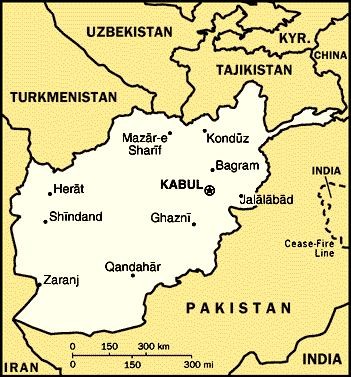OSH, Kyrgyzstan (TCA) — Right across the Tajik border and under the very noses of Russian and Indian military based near the frontier, it is all-out war again in the northeast of Afghanistan and there is a pretty good chance that Afghan government troops will bite the dust in the absence of American, or eventually Russian, Indian and/or Chinese air support. Only days after the Taliban announced its “spring offensive” throughout Afghanistan, the much-feared extremists already keep the initiative both in the southwest and the northeast. Only resumed infighting between extremist forces could bring some relief for a disenchanted population in the region.
“Fighting broke out on Thursday in six districts in Kunduz province, a crucial northern stronghold close to the Tajikistan border, as well as around the provincial capital, with Afghan security forces battling militants through the night,” Reuters reported.
According to the news report posted by Dawn of Pakistan, “Abdul Wasay Basil, spokesman for the governor of Kunduz province, said that more than 50 Taliban had been killed and 60 others wounded after the Taliban launched a major offensive in the province on Friday. Kunduz Governor Asadullah Omarkhil said in a video statement, “They (Taliban) dreamed of capturing the city of Kunduz, but they faced a jaw-breaking answer from Afghan forces.”
Simultaneously, Taliban units were engaged in heavy fighting over the district of Dand-e-Ghori in the province of Baghlan, which separates Kunduz from the border with Tajikistan. Should the entire area, inhabited by large groups of ethnic Tajiks, fall into the Taliban’s hands, the road to Tajikistan’s southwest, and eventually from there to Dushanbe, will be virtually open. As though to make things worse, news media reported that on April 14, “at least” 30 members of the armed police force in Baghlan have “joined” the Taliban troops near Dand-e-Ghori.
‘Anti-terror operations’
For the Tajiks, the only hope to push off an eventual invasion by Taliban forces lies in the presence of the Russian Ayni military base in the central-west close to the border with Uzbekistan, and an Indian airbase at Farkhor, right on the border with Afghanistan and on the edge of the current combat zones across it. In March this year, more than 50,000 Russian and Tajik troops held a week’s drill in “anti-terror operations” within the framework of the CSTO (Collective Security Treaty Organization), which unites Tajikistan, Kyrgyzstan, Russia and Belarus. Recently, China has announced similar exercises within the larger SCO (Shanghai Cooperation Organisation) of which, among others, China and Russia are members together with the ex-Soviet republics in Central Asia (except Turkmenistan).
Oddly, or maybe obviously, neither Russia nor India nor China seems to be inclined to give air support to the Afghan troops trapped in Kunduz or struggling in Dand-e-Ghori – after the example of intervention in Syria.
Presently about 9,800 U.S. troops are stationed in Afghanistan but the larger part is engaged in training activities and only few thousand are involved in counterterrorism missions. Most are part of an international training effort, but several thousand are part of a counterterrorism mission in the hope that the Afghan government forces will be able to maintain order. Strictly from a purely military point of view it would look quite justified if Moscow and Beijing should decide to jump in.
‘People need to have confidence’
The Russo-Chinese attitude as well as India’s wait-and-see policy could be explained by the hope that the Taliban will implode by infighting and struggles with its dubious allies Daesh and Al-Qaeda, both present on the ground even though estimates of their numbers tend to vary. After the death of its founder and “spiritual leader” Mullah Mohammad Omar in 2013, which has only been admitted in fall last year, his place was taken by his longtime deputy Mullah Akhtar Mansour.
When US State Secretary John Kerry visited Kabul earlier in April, he was quoted as stating that “People need to have confidence about the direction that we are moving and the direction that the government is moving,” – referring to the team led by President Ashraf Ghani who clings to power thanks to the ambiguous support of secular warlords such as his political rival and present-day Chief Executive Abdullah Abdullah and Prime minister Ashraf Dostum. But that direction seems less clear by the day.
‘Young people are leaving’
American and other western officials have been quoted by media as claiming that Taliban forces now control or heavily influence around a third of the country, more than at any time since the 2001 U.S. invasion that toppled the Taliban regime. They also tend to claim that the number of Daesh “fighters” has been reduced from over 3,000 to around 1,000 since last summer and the number of districts under their control from “six to eight” to “two or three”.
But Afghan and foreign officials have indicated that as many as 7,000 Chechen and other foreign fighters could be operating in the country, loosely allied with the Taliban and other militant groups. A recent opinion piece in the Huffington Post read that “Eighty-one percent of Afghans have no confidence in their government. Young people are leaving the country in droves, undertaking perilous journeys with uncertain future in Europe.”
Such words need not only be heeded by the Afghan coalition in power, but also by the governments of the republics to its north and beyond…



